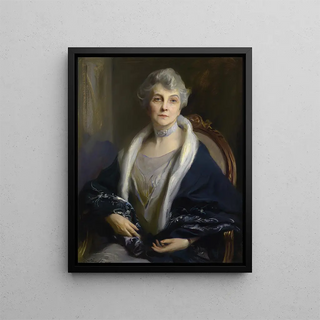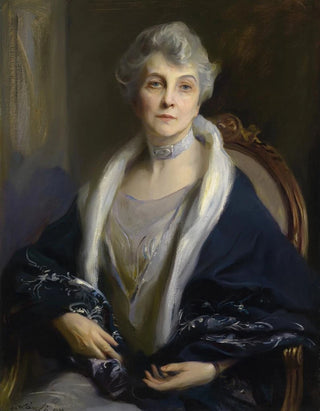Art print | Clara Margaret Cook Kellogg - Philip Alexius de László


View from behind

Frame (optional)
Reproduction of Clara Margaret Cook Kellogg by Philip Alexius de László – Captivating introduction
The artwork "Clara Margaret Cook Kellogg" by Philip Alexius de László represents much more than a simple portrait; it embodies the elegance and refinement of an era when pictorial art was a means of expressing social and cultural values. This painting, which immortalizes the renowned opera singer Clara Kellogg, immerses us in a universe where beauty and artistic virtuosity meet. The vibrant composition and delicate colors invite the viewer to explore the nuances of Kellogg's personality, while also showcasing the artist's technical skill. Through this art print, the very essence of the original work is preserved, offering a window into the past while enriching our contemporary spaces.
Style and uniqueness of the work
Philip Alexius de László, known for his mastery of portraits, captured the soul of his subjects with rare sensitivity. In "Clara Margaret Cook Kellogg," the choice of colors and the subtle light bathing the singer's face reveal an emotional depth that transcends mere visual rendering. The artist employs chiaroscuro techniques to accentuate Kellogg's delicate features, while incorporating decorative elements that evoke her status as a renowned artist. The singer's pose, both natural and posed, demonstrates László's ability to create portraits that combine intimacy and grandeur. This painting stands out for its realistic approach, while maintaining a certain idealization, typical of late 19th-century art.
The artist and his influence
Philip Alexius de László, of Hungarian origin, left a mark on the art world with his unique style and his ability to immortalize emblematic figures of his time. Trained in prestigious academies, he managed to combine influences from academic painting with a modern sensibility, which allowed him to stand out in the artistic community. László painted numerous personalities, ranging from aristocrats to artists, and his work has been widely recognized for its ability to capture the very essence of his subjects. His influence endures today, both in

Matte finish

View from behind

Frame (optional)
Reproduction of Clara Margaret Cook Kellogg by Philip Alexius de László – Captivating introduction
The artwork "Clara Margaret Cook Kellogg" by Philip Alexius de László represents much more than a simple portrait; it embodies the elegance and refinement of an era when pictorial art was a means of expressing social and cultural values. This painting, which immortalizes the renowned opera singer Clara Kellogg, immerses us in a universe where beauty and artistic virtuosity meet. The vibrant composition and delicate colors invite the viewer to explore the nuances of Kellogg's personality, while also showcasing the artist's technical skill. Through this art print, the very essence of the original work is preserved, offering a window into the past while enriching our contemporary spaces.
Style and uniqueness of the work
Philip Alexius de László, known for his mastery of portraits, captured the soul of his subjects with rare sensitivity. In "Clara Margaret Cook Kellogg," the choice of colors and the subtle light bathing the singer's face reveal an emotional depth that transcends mere visual rendering. The artist employs chiaroscuro techniques to accentuate Kellogg's delicate features, while incorporating decorative elements that evoke her status as a renowned artist. The singer's pose, both natural and posed, demonstrates László's ability to create portraits that combine intimacy and grandeur. This painting stands out for its realistic approach, while maintaining a certain idealization, typical of late 19th-century art.
The artist and his influence
Philip Alexius de László, of Hungarian origin, left a mark on the art world with his unique style and his ability to immortalize emblematic figures of his time. Trained in prestigious academies, he managed to combine influences from academic painting with a modern sensibility, which allowed him to stand out in the artistic community. László painted numerous personalities, ranging from aristocrats to artists, and his work has been widely recognized for its ability to capture the very essence of his subjects. His influence endures today, both in






